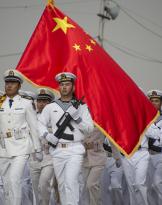From Neanderthal man onwards, migratory flows are regulated on an axiom: they are associated with the idea of going somewhere to find something. Even a fool understands this: no one would leave his home without the prospect of being better off. Whether they are peaceful or not, it applies to the Mediterranean and it applies to the whole world. From the Romans to the Macedonian pirates, from the Vikings to the Mongols, from the Titanic to the boat people in Cambodia: humans move only if moved by a need or an expectation.
Understanding the factors that contribute to creating them is not complicated.
The first reason is certainly economic. The main route of the migratory routes rotates on the "hunger-opulence" axis with direction from the first to the second. It is obvious that we start with the principle "I go where we eat" and not according to that "I go where we fast". This is why the Irish went to America and not to Africa or why there are more Bengali in Rome than Italians in Dhaka to sell roses.
It has been so since the dawn of time: peaceful flows (emigration) on the one hand; violent flows (raids and invasions) on the other.
The second reason is political. The human masses start from where there are problems (wars and persecutions) to land where there are less. It is one of the reasons why there are many Kurdish taxi drivers in Oslo but not even a Norwegian one in Mosul.
The differences in penal systems and the perception of freedom consolidate this motivation (an account is to live where theft is punished by amputation, an account where it is decriminalized ...), but usually they are not relevant.
Without prejudice to the particular or personal reasons that guide human movements that are numerically irrelevant, it is however good to underline that grouping migration routes on the basis of motivations alone does not always offer an exhaustive picture.
The migratory phenomena are not all the same. The "who", the "when" and the "where" are essential variables: help us to understand the social and geopolitical implications far beyond the ideological gaze with which the news are often generalized. That mischievous look that assigns the points of departure and those of arrival with the simple distinction between poor people and rich people.
The most striking example is the reference to Italian mass emigration in the early twentieth century and the Second World War. Not infrequently they are compared to the exodus towards Western Europe of our times. The famous "When the Albanians were us ..." in order to understand each other.
To stand by the example for at least three reasons the comparison does not hold up.
The migrations that have depopulated the Bel Paese came into contact with "new" continents. The United States, Canada, Argentina and Australia still have a very low population / area ratio compared to the European average. It does not take a genius to understand that millions of people on a semi-virgin territory generate less friction than millions of people on exhausted territories. It's one thing to fill an empty station wagon, another story with an already loaded 500. Given the low numerical impact on the territory, amending the analysis citing the shameful and sad slaughters of the indigenous populations (Pellerossa, Indios, Precolombiani, Aborigeni) would benefit little.
It must be said then that Italian migrants of the nineteenth and twentieth century insisted on shores inhabited by Christians. To date, it does not appear that Brooklyn or Montevideo were Islamic or Hindu pilgrimage destinations. On the contrary, often already inserted communities had Catholic orientation. This is the case of Irish New England, Spanish South America or French Quebec. To argue that the degree of interaction between Italians and Spaniards is the same between Austrians and Senegalese, it takes malafade ... If different uses and customs are the beauty of the world, they are not always a shortcut for easy cohabitation. This in the maximum respect of all, of course.
Even remembering that the Italians have exported a lot of malfeasance, transferring between spaghetti and mandolins many ways to relate not always an example of legality, we should then specify. If the Godfather I, II and III are Cosa Nostra and not someone else's, it is also true that the excellences in the "malaffare" have been joined by others in the generic "doing". Skyscrapers, roads and cities of half the world thank them.
Underselling it without rhetoric is very difficult. Not underlining it is dishonest.
Are there migrations and migrations?
Judging by the cultural testaments of the Greek, Roman or Arab civilizations in comparison with the Mongolian one, for example, it would seem so.
Confronting with intellectual honesty on the theme of migration helps us to understand its value in political, anthropological and social terms. It helps us to understand that the moving masses and transformations have always been the engine of human evolution. The geopolitical implications related to them are endless. To cite a forge always active in this sense, just think of the Balkans: political balances, tears, dominations, recriminations, open wars, secessions ... the micro and macroscopic politics of the last centuries has in fact been regulated on migratory flows. The last example in chronological order is the comparison between Serbs and Albanians on Kosovo.
Thinking about migrations without making distinctions, on the other hand, is of little use. I am honored by the ecumenical and humanitarian approach, it would be good to scratch away the ideological patina that pollutes any other type of analysis.
Closing in a North-South dualism of the world often implies the "exploiters-exploited" ideological assumption, valid for many questions but not in an absolute sense.
Prejudice and generalization do not help anyone. Men less who leaves his home with the prospect of being better.
Giampiero Venturi
.jpg)
(in the opening photo a UH-60 Black Hawk on patrol, following checks in a drainage tunnel between the USA and Mexico - source: US Department of Homeland Security)












